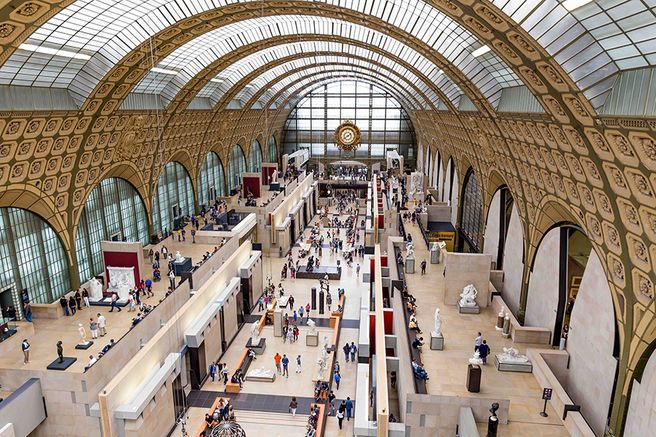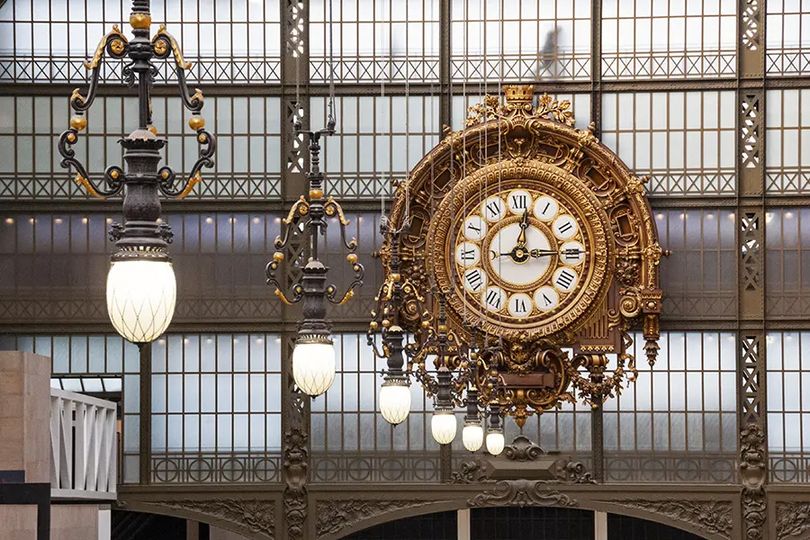

Your Guide to Experiencing the Musée d'Orsay in 2025
Things to know before you go
2025.02.01 (Last updated 2025.08.01)Directed by Matthew
Paris, a global capital of art and culture. Situated majestically on the banks of the Seine, the Musée d'Orsay houses a world-renowned collection of 19th-century masterpieces. Its impressive architecture, a remarkable testament to its history, and the plethora of iconic artworks within, attract art connoisseurs and travelers from around the globe. Allow us to guide you through a comprehensive exploration of this Parisian gem.
1. From Railway Station to Art Sanctuary: A Building Transformed

The Musée d'Orsay's grandeur is immediately apparent. However, many are unaware that this architectural marvel was originally a train station. Constructed for the 1900 Paris Exposition, the Gare d'Orsay represented the pinnacle of modern engineering and opulent Art Nouveau design, truly ahead of its time. While its function as a railway hub eventually ceased, the building was meticulously repurposed into a magnificent museum in 1986, under the expert guidance of Italian architect Gae Aulenti.
The building's history is subtly interwoven with its present, creating a unique atmosphere. The soaring arched ceilings and the iconic grand clock in the main hall serve as potent reminders of the building's former purpose. This harmonious blend of past and present contributes to the widespread belief that the museum itself is an exquisite work of art.
2. Navigating Your Way to the Musée d'Orsay

The Musée d'Orsay enjoys convenient access via the Paris Metro. Simply take Line 12 and alight at the Solférino station. Alternatively, if you are using the RER, disembark at the Musée d'Orsay station on Line C.
3. Streamline Your Visit: Secure Priority Access

The Musée d'Orsay's global renown translates into considerable visitor numbers. To ensure a seamless experience, it is strongly recommended that you secure priority access tickets in advance. These tickets are readily available through WAUG.
4. An Essential Selection: Masterpieces Not to be Missed

The Musée d'Orsay boasts an impressive collection of Impressionist, Post-Impressionist, and Symbolist masterpieces, showcasing the major artistic movements of the 19th and early 20th centuries. Here is a curated selection of essential works:
Édouard Manet:
Le Déjeuner sur l'herbe (The Luncheon on the Grass), Olympia - These seminal works sparked considerable controversy upon their debut, challenging established artistic conventions and presenting a bold, modern perspective on the female form.
Claude Monet:
Impression, Sunrise, Water Lilies series - Witness the genesis of Impressionism with Impression, Sunrise, and immerse yourself in the captivating beauty of Monet's water lily pond, a recurring motif from his Giverny garden.
Auguste Renoir:
Dance at Le Moulin de la Galette, Young Girls at the Piano - Renoir's canvases are imbued with a palpable sense of joy and vitality, capturing the essence of everyday life with remarkable warmth.
Edgar Degas:
The Ballet Class, Ballet Rehearsal on Stage - Degas' masterful depictions of ballerinas offer a unique insight into the world of ballet, capturing both the grace and the rigorous discipline of these dancers.
Vincent van Gogh:
The Starry Night Over the Rhone, Self-Portrait, The Church at Auvers - Experience the raw emotional intensity and vibrant energy of Van Gogh's distinctive brushstrokes and palette.
Paul Gauguin:
Tahitian Women, Self-Portrait with the Yellow Christ - Embark on a journey to the exotic realm of Tahiti through Gauguin's vivid colors and unique artistic approach.
5. Expert Recommendations for an Enhanced Visit:

WAUG Advance Booking:
Circumvent lengthy queues by securing your tickets in advance through WAUG.
Enrich your understanding of the artworks with an insightful audio guide, available in multiple languages.
Fifth-Floor Café:
Ascend to the fifth-floor café and enjoy a moment of respite while taking in the breathtaking panoramic views of the Seine and the Parisian cityscape.
Museum Shop:
Commemorate your visit with a carefully chosen souvenir. The museum shop offers a wide array of art prints, postcards, books, and other unique mementos.
Book Now
- 타겟
- production
- 서비스
- universal
- 버전
- 3.25.7
- 폰트
- 화면 스타일





